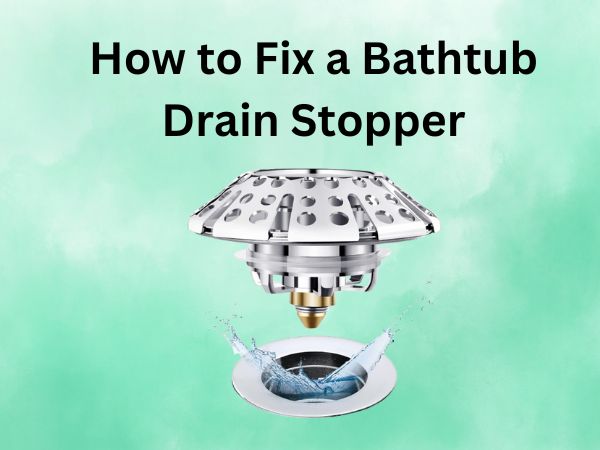Blowing Compressed Air into Clogged Drain: The Ultimate Drain Unclogging Technique
Blowing compressed air into a clogged drain is an effective method to clear the blockage. This technique uses the pressure from the compressed air to dislodge and push out the debris causing the blockage in the drain.
When faced with a clogged drain, it can be a frustrating and inconvenient situation. Water may not drain properly, causing potential damage to your plumbing system. While there are different methods to unclog a drain, blowing compressed air into the drain is a quick and efficient solution.
By harnessing the pressure from the compressed air, you can break up and remove the blockage, allowing the water to flow freely again. It’s important to note that this method works best for minor clogs or when the blockage is relatively close to the drain opening. For more stubborn obstructions or deeper clogs, it may be necessary to consult a professional plumber.
Table of Contents
Understanding Clogged Drains
Clogged drains can be a major inconvenience, causing water to back up and potentially even damaging your plumbing system. Understanding the common causes of clogged drains and recognizing the signs of a clog can help you tackle the issue before it becomes a significant problem.
In this section, we will explore the key points related to clogged drains.
Common Causes Of Clogged Drains
- Food remnants: Accumulation of food particles and grease in kitchen sink drains is a leading cause of clogs. Avoid disposing large quantities of food scraps down the drain and use a strainer to catch any debris.
- Hair buildup: In bathroom drains, hair is a common culprit. Regularly cleaning hair from drains and using a hair strainer can prevent clogs.
- Soap scum and mineral deposits: Over time, soap scum and minerals can accumulate in drains, reducing their capacity to flow freely. Regular cleaning and maintenance can help prevent clogs caused by these substances.
- Foreign objects: Accidentally dropping or flushing items such as toys, jewelry, or sanitary products down the drain can cause clogs. Be cautious and keep drains clear of these objects.
Signs Of A Clogged Drain
- Slow drainage: If water is taking longer than usual to drain from sinks, tubs, or showers, it could be a sign of a clog.
- Foul odors: A persistent unpleasant smell emanating from drains often indicates a clog. This odor may be caused by decaying food, stagnant water, or other debris trapped in the pipes.
- Gurgling sounds: Unusual gurgling or bubbling noises coming from drains when water is being emptied can suggest a blockage. This happens because air is trapped in the pipe due to a clog.
- Overflowing or standing water: A clear indication of a clogged drain is water overflowing or pooling around sinks, tubs, or toilets. This requires immediate attention to prevent further damage.
By understanding the common causes of clogged drains and recognizing the signs of a clog, you can be proactive in maintaining your plumbing system. Implementing preventive measures and promptly addressing any clogs can save you from unnecessary hassle and costly repairs in the future.
Keep reading to discover effective methods, such as blowing compressed air, to unclog drains and restore proper flow.
The Power Of Compressed Air
Unclogging drains can be a frustrating household chore that many of us have encountered at some point. While there are various methods to tackle this issue, one highly effective technique is using compressed air. By harnessing the power of air pressure, you can dislodge stubborn clogs and restore the smooth flow of water in your drains.
In this section, we will explore how compressed air works to remove clogs and why it is a go-to solution for many homeowners.
Introduction To Compressed Air As An Effective Drain Unclogging Technique
Using compressed air to clear clogged drains has gained popularity due to its efficiency and ease of use. This method involves using an air compressor or a can of compressed air to create a powerful burst of pressurized air that dislodges the blockages obstructing your pipes.
Here are some key points about compressed air as a drain unclogging technique:
- Powerful bursts of air: Compressed air generates forceful bursts of air pressure that can effectively push clogs out of the way, allowing water to flow freely again.
- Versatile application: Whether you have a clogged sink, bathtub, toilet, or shower drain, the power of compressed air can be applied to all of them.
- Safe for pipes: Unlike chemicals or mechanical tools that may cause damage to your pipes, compressed air provides a gentle yet effective solution without the risk of any corrosive substances or abrasive materials.
- Quick procedure: Using compressed air is a relatively quick method that can easily be done by homeowners. It requires minimal setup and saves you from the hassle of disassembling pipes or using harmful chemicals.
- Cost-effective: Investing in an air compressor may seem like an additional expense, but its versatility makes it a wise investment in the long run. Moreover, the frequent cost of hiring a plumber can be avoided by unclogging drains yourself with compressed air.
Using compressed air is a straightforward method that can save you time, money, and frustration. Now that you understand the benefits and workings of compressed air, you’ll be equipped to tackle those pesky clogged drains with ease.
Step-By-Step Guide To Using Compressed Air
Preparation And Safety Precautions
Before using compressed air to clear a clogged drain, it’s essential to take the necessary precautions to ensure your safety. Here are the key points to keep in mind:
- Identify the type of drain: Determine the type of drain you are working on, whether it’s a sink, toilet, or bathtub drain. This will help you select the appropriate equipment and technique.
- Protective gear: Wear protective goggles and gloves to shield yourself from any debris that may be released during the unclogging process.
- Check the drain: Inspect the drain for any signs of damage or blockage that may require professional assistance. If in doubt, consult with a plumber before attempting to clear the clog yourself.
- Turn off the water supply: Before starting the process, turn off the water supply to prevent any accidental flooding or water damage.
- Ensure ventilation: Make sure the area is well-ventilated to avoid inhaling any potentially harmful fumes from the cleaning agents or the compressed air.
Proper Equipment And Tools Needed
Having the right equipment and tools is crucial for successfully using compressed air to unclog a drain. Here’s what you’ll need:
- Compressed air source: Use a suitable compressed air source, such as an air compressor or a can of compressed air specifically designed for household use.
- Safety nozzle: Attach a safety nozzle to the compressed air source. This nozzle helps regulate the airflow and prevents any potentially dangerous high-pressure blasts of air.
- Extension hose: If necessary, use an extension hose to access hard-to-reach drains or areas.
- Plunger: A plunger can be used in conjunction with compressed air to further dislodge stubborn clogs.
Step 1: Clearing The Surface Debris
Before using compressed air, it’s essential to clear away any visible debris obstructing the drain. Follow these steps:
- Remove any visible debris: Use gloved hands or tweezers to remove any loose hair, dirt, or other debris from the drain surface.
- Flush with hot water: Pour hot water down the drain to help loosen and flush away any remaining debris. This step will enhance the effectiveness of the compressed air.
Step 2: Inserting The Nozzle Into The Drain
Now that you have cleared the surface debris, it’s time to insert the nozzle into the drain. Here’s how:
- Attach the safety nozzle: Attach the safety nozzle securely to the compressed air source.
- Insert the nozzle gently: Carefully insert the nozzle into the drain opening, ensuring a snug fit. Avoid applying excessive force that may damage the drain pipe.
Step 3: Applying Compressed Air
With the nozzle inserted, it’s time to apply the compressed air to dislodge the clog. Follow these guidelines:
- Start with low pressure: Begin by applying low-pressure bursts of compressed air. Gradually increase the pressure if necessary, but be cautious not to exceed the recommended limit to avoid damaging the drain or causing injury.
- Pulsating technique: Apply the compressed air in short bursts, using a pulsating motion. This technique helps create a forceful surge of air to dislodge the clog.
Step 4: Testing For Unclogged Drain
After applying the compressed air, it’s essential to test whether the drain is unclogged. Follow these steps:
- Run water: Turn on the water supply to check if it flows freely down the drain without any signs of blockage.
- Repeat if necessary: If the drain is still clogged, repeat the process of clearing the surface debris and applying compressed air.
Remember, if you encounter stubborn or persistent clogs, it’s advisable to seek professional assistance to prevent further damage to your plumbing system.
By following these step-by-step guidelines and taking the necessary precautions, you can effectively use compressed air to clear clogged drains. Stay safe and enjoy a well-functioning drainage system in your home!
Benefits And Considerations
Blowing Compressed Air Into Clogged Drain: Benefits And Considerations
Clogged drains are an all-too-common household nuisance that can cause frustration and inconvenience. While there are various methods of unclogging drains, one technique that has gained popularity is blowing compressed air into the drain. This method utilizes the force of compressed air to dislodge and clear blockages, offering several advantages over traditional unclogging methods.
However, it is important to understand the benefits, considerations, safety measures, and potential risks associated with this technique.
Advantages Of Using Compressed Air For Drain Unclogging:
- Quick and efficient: Blowing compressed air into clogged drains can quickly dislodge and clear blockages, allowing for a faster resolution.
- Cost-effective: This method can be a cost-effective alternative to calling professional plumbers or using chemical drain cleaners, saving you money in the process.
- Environmentally friendly: Blowing air into the drain is a chemical-free approach that minimizes the use of harmful substances, making it an eco-friendly option.
- Versatile: Compressed air can be used to unclog various types of drains, including sinks, showers, and toilets, offering a versatile solution for multiple plumbing issues.
Safety Measures And Precautions To Keep In Mind:
- Eye and ear protection: It is essential to wear safety goggles and ear protection when working with compressed air to prevent any potential eye or hearing damage.
- Adequate ventilation: Ensure that there is proper ventilation in the area where you are performing the unclogging process to avoid the buildup of compressed air or any harmful fumes.
- Correct air pressure: Use an appropriate air pressure for the specific drain you are unclogging, as excessive pressure can potentially damage the plumbing system.
- Use the right nozzle: Select a nozzle that is suitable for the drain size to maximize the effectiveness of the compressed air without causing damage.
Potential Risks And Limitations Of The Technique:
- Backsplash: Blowing compressed air into a clogged drain can sometimes cause sewage or water to splash back. To avoid any messy situations, take necessary precautions and be prepared for potential splashing.
- Limited effectiveness for stubborn blockages: While compressed air can clear many types of blockages, it may not be as effective for more severe or stubborn clogs. In such cases, it may be necessary to seek professional assistance.
- Potential system damage: Applying excessive force or pressure while using compressed air can lead to damage to the plumbing system, causing leaks or other issues. It is crucial to exercise caution and use the technique judiciously.
By utilizing compressed air for drain unclogging, you can benefit from its quick and efficient nature, cost-effectiveness, and environmentally friendly approach. However, it is important to adhere to the necessary safety measures and precautions while being aware of the potential risks and limitations associated with the technique.
Remember to exercise caution and always consider seeking professional help if needed.
Maintenance And Preventive Tips
Clogged drains can be a major hassle – water backing up, unpleasant odors, and potential damage to your plumbing system. While blowing compressed air into a clogged drain can help alleviate the problem, it’s important to take preventative measures to avoid future clogs.
By implementing a regular maintenance routine and following a few additional tips, you can keep your drains clear and running smoothly.
Preventing Future Drain Clogs
To ensure that your drains stay clog-free, here are some key points to keep in mind:
- Watch what you pour: Avoid pouring grease, oil, coffee grounds, and other substances down the drain as these can solidify and create clogs. Instead, dispose of them in a separate container.
- Use drain traps: Install drain traps in sinks and showers to catch hair, soap residue, and other debris. Regularly clean out these traps to prevent blockages from forming.
- Flush with hot water: Once a week, pour hot water down your drains to help dissolve any build-up and keep the pipes clear.
- Be mindful of what goes down the toilet: Only flush toilet paper down the toilet. Items such as wipes, feminine hygiene products, and cotton balls can clog your drains and cause major plumbing issues.
Regular Maintenance Routine
Creating a regular maintenance routine for your drains can save you from the headache of dealing with clogs. Consider the following tips:
- Clean drains with baking soda and vinegar: Once a month, pour a mixture of baking soda and vinegar down your drains. Let it sit for a few minutes, then flush with hot water. This natural solution can help break down build-up and keep your drains clear.
- Inspect your pipes: Regularly inspect your pipes for any signs of leakage, corrosion, or blockages. Address any issues promptly to prevent further damage.
- Schedule professional drain cleaning: Every one to two years, consider hiring a professional plumber to clean your drains. They have specialized tools and expertise to thoroughly clear out any stubborn clogs and ensure the longevity of your plumbing system.
Additional Tips For Keeping Drains Clear
In addition to regular maintenance, the following tips can help you keep your drains clear:
- Dispose of cooking oil properly: Instead of pouring cooking oil down the drain, allow it to cool and solidify. Then, scrape it into a trash bag or container and dispose of it in the garbage.
- Use a plunger: If you notice a partial clog, a plunger can be an effective tool for dislodging debris and restoring proper flow. Make sure to use a plunger specifically designed for sinks or toilets, depending on the location of the clog.
- Consider enzymatic drain cleaners: Enzymatic drain cleaners contain bacteria that can eat away at organic matter, helping to prevent future clogs. Use them according to the manufacturer’s instructions.
- Educate household members: Teach everyone in your household about what should and shouldn’t go down the drains. By raising awareness, you can collectively take steps to prevent clogs and maintain a smoothly running plumbing system.
By following these maintenance and preventive tips, you can reduce the chances of encountering clogged drains and ensure the longevity of your plumbing system. Taking proactive measures and incorporating regular cleaning into your routine will save you time, money, and the frustration of dealing with persistent clogs.
Frequently Asked Questions On Blowing Compressed Air Into Clogged Drain
Can Compressed Air Unclog A Drain?
Yes, blowing compressed air into a clogged drain can effectively remove blockages by dislodging debris and clearing the pipe.
How Does Compressed Air Clear A Clogged Drain?
When compressed air is blown into a clogged drain, the force pushes the obstruction through the pipe, allowing water to flow freely again.
What Type Of Compressed Air Tool Should I Use?
A handheld air compressor or an air blow gun attachment can be used to apply the compressed air directly into the drain.
Is It Safe To Use Compressed Air On Drains?
Yes, using compressed air on drains is generally safe. However, it’s important to follow safety precautions and avoid excessive pressure that could damage the pipes.
Are There Any Risks Associated With Using Compressed Air?
Using excessive pressure or improper techniques may cause pipes to burst or fittings to disconnect. It’s crucial to use compressed air carefully and within safe limits.
Can Compressed Air Be Used On Any Type Of Clog?
Compressed air is effective for most common clogs, such as hair, soap residue, or small objects. However, it may not work on severe or stubborn blockages.
Are There Any Alternatives To Using Compressed Air For Unclogging Drains?
Yes, other methods like using a plunger, drain snake, or chemical drain cleaners can also help to clear clogs if compressed air is not available or suitable.
Conclusion
Blowing compressed air into a clogged drain can be a quick and effective solution to unclog it. By using compressed air, you can dislodge any debris or obstruction that is causing the blockage without the need for harsh chemicals or calling a professional plumber.
The force of the air can help break up the clog and restore proper water flow in your drains. However, it is important to take proper safety precautions when attempting this method and to use the right tools and techniques.
Additionally, regular maintenance and prevention methods should be practiced to avoid future clogs. By following these simple steps, you can save time and money by unclogging your drains yourself. Remember, a little bit of maintenance can go a long way in keeping your drains flowing smoothly.



